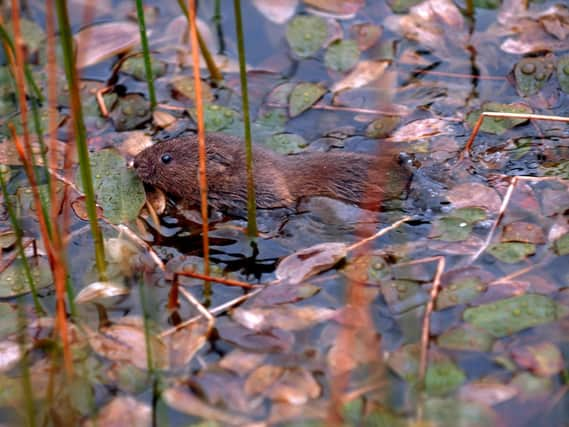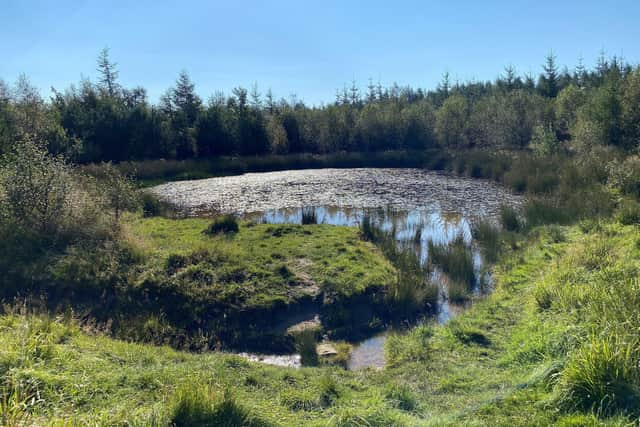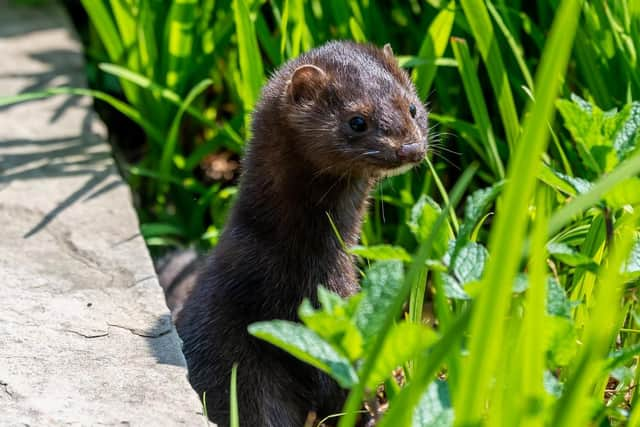The work that went on behind the scenes and led to the re-introduction of water voles to Nidderdale


The riparian mammals which have seen a huge decline in numbers and are now classed as endangered are rarely seen on waterways.
Phil Tennyson, countryside and recreation co-ordinator for the utilities company, is part of the team which has been working towards the release that took place this week at Timble Ings in the Nidderdale Area of Outstanding Natural Beauty (AONB).
Advertisement
Hide AdAdvertisement
Hide AdManaging the water courses and river banks, he said the team worked hard to create an environment which was good for bio-diversity and would attract both insects and small mammals.


Timble Ings in the Nidderdale AONB is owned and managed by Yorkshire Water. It is a large area of woodland on the western side of the Washburn Valley and the site is designated as a Site of Importance for Nature Conservation (SINC) due to its rich variety of habitats and wide range of flora and fauna.
AONBs are recognised for their national importance and have the same level of protection as National Parks.
Phil said they potentially provided a great environment for a new colony of water voles. “The ponds in Timble Wood have been established for around 15 years,” Phil said. “And have good vegetation cover which would work for the water voles.”
Advertisement
Hide AdAdvertisement
Hide AdWater voles were once a common sight on British water courses inhabiting virtually all the fresh water landscapes of mainland Britain.


Now, however, the population has declined by more than 90 per cent making them a mammal which is rarely seen. They live along slow-flowing rivers, ditches, dykes and lakes with plenty of vegetation, making extensive burrows in the banks.
“They were believed to have colonised most of England when we had plenty of fens and bogs,” Phil said.
“But as we have changed the management regime of water courses they have lost a lot of the vegetation they needed to feed and burrow in.”
Advertisement
Hide AdAdvertisement
Hide AdThe loss of habitat through changes in management and water pollution has been part of the reason for their decline but one of the biggest threats is the invasive American mink.
“The mink arrived in the 50s and 60s when they were farmed in England and they heavily predate on water voles,” Phil explained.
“The female mink can fit into burrows and take out a whole water vole family.”
As well as providing a well-established environment for the water voles, they were regarded by Nidderdale AONB as a key species.
Advertisement
Hide AdAdvertisement
Hide AdPhil said they were also recorded as being the mammal with the steepest decline in the area.
Kelly Harmar, biodiversity officer at Nidderdale AONB, said recent surveys in the area had revealed “precious few” populations of water voles in local rivers.
But having found a potential release site, there was still plenty of work to be done before it could go ahead. The 100 water voles which will call Timble Woods home have been bred in captivity by Derek Gow Consultancy, which specialises in water vole conservation.
Having found what they thought would be the best place for the release, Phil said they invited Derek Gow to visit the woods and offer advice. One of the biggest concerns was around the mink population as they needed to be sure the water voles would stand a good chance of survival in order to form a colony.
Advertisement
Hide AdAdvertisement
Hide Ad“We did a habitat survey to highlight the good and bad areas and during autumn last year and spring this year, I have been monitoring the mink population in the area,” Phil said.
To do this a floating raft is put in the water courses with a wet clay pad inside. As the mink gets curious and goes to investigate, it leaves its paw prints on the pad so a picture of the mink population in the area could be gathered.
The area was found to have a low number of the predators which made it a viable release site for the water voles.
The final stages of the project got underway at the beginning of this week with the water voles brought on site and put into pens.
Advertisement
Hide AdAdvertisement
Hide AdThe pens allow the mammals to acclimatise to their new surroundings and they stay in those for a day or two. Later in the week, baffle boards were installed so the mammals could come and go safely in their new environment.
Phil said it was a “real achievement” and the hope is to establish a colony of water voles on the site to enhance the eco-system.
Ms Harmer said the introduction was a positive step at a site chosen to maximise the mammals chances of survival.
“We hope the new arrivals will be very happy in their new home,” she said.
Advertisement
Hide AdAdvertisement
Hide AdLee Pitcher, head of partnerships at Yorkshire Water, said one of the aims of Yorkshire Water’s land strategy is to enable plants and wildlife to thrive on Yorkshire Water land.
“The work we’ve undertaken at Timble Ings Woods makes it a fantastic habitat for water voles and is important for the protection of this vulnerable species.”
Timble Ings Woods are open to the public with forestry paths around the area for people to use.
Yorkshire Water has requested visitors stay on the paths and keep dogs on a lead away from ponds and watercourses to avoid disturbing water voles.
Advertisement
Hide AdAdvertisement
Hide AdThe water vole project is the start of a five-year plan by Yorkshire Water for biodiversity enhancements.
Phil said a funding pot has been made available to carry out the work which he said was expected to go on beyond the five-year mark.
Plans in the pipeline this winter include putting in more ponds at Timble Ings Woods.
Support The Yorkshire Post and become a subscriber today.
Your subscription will help us to continue to bring quality news to the people of Yorkshire. In return, you'll see fewer ads on site, get free access to our app and receive exclusive members-only offers.
Advertisement
Hide AdAdvertisement
Hide AdSo, please - if you can - pay for our work. Just £5 per month is the starting point. If you think that which we are trying to achieve is worth more, you can pay us what you think we are worth. By doing so, you will be investing in something that is becoming increasingly rare. Independent journalism that cares less about right and left and more about right and wrong. Journalism you can trust.
Thank you
James Mitchinson
Comment Guidelines
National World encourages reader discussion on our stories. User feedback, insights and back-and-forth exchanges add a rich layer of context to reporting. Please review our Community Guidelines before commenting.